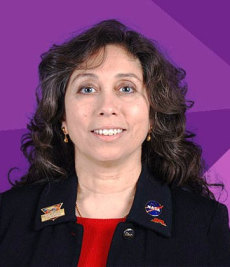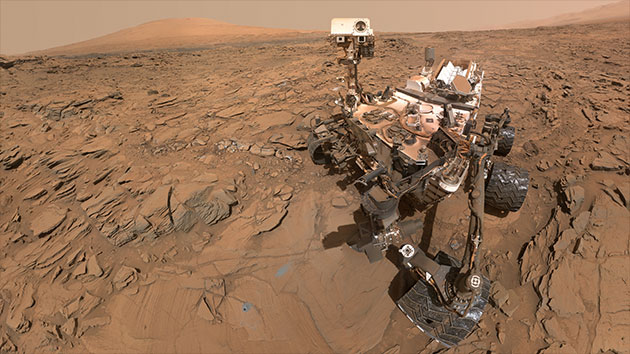
Guiding the Curiosity Rover, Getting a Better View in VR, and Inspiring the Next Generation
SIGGRAPH got off to a stellar start on Monday when keynote speaker Z. Nagin Cox, a spacecraft operations engineer from NASA's Jet Propulsion Laboratory in Pasadena, CA kicked off the proceedings by talking about robots, planetary exploration, and how computer graphics — not just CG visualizations but also Hollywood-style VFX — make the work NASA does possible.
Cox played excerpts from a video NASA created with the subtitle "Seven Minutes of Terror" that was all about the challenge of landing the Curiosity rover on the Martian surface, depicting the lander — which was still en route to Mars at the time — going through almost absurd machinations before safely delivering its cargo: the lander roars into the Martian atmosphere at 12,000 mph, fires two parachutes, uses jetpacks to reduce its speed further, and finally lowers Curiosity to the planet's surface on a long rope before cutting the tether and flying away. "It went viral by NASA standards," Cox recalled. "People were saying, 'That's not going to work, right?'"
The reel Cox played for the SIGGRAPH crowd also included footage of jubilant NASA staff at mission control as Curiosity's landing went off as planned in October of 2012. "There were Imax cameras in the room," she said. "What you're seeing is a group of people who had worked together on something we didn't know would work, and seeing it happen."
Cox said CG simulations are important not just because they help show the general public how daring NASA's missions are, but also because they help NASA itself plan the movements of its planetary rovers. "Rover planners," who guide the landed rover around the Martian terrain on a day-to-day basis, look at a combination of data from cameras on the rover and data from Mars orbiters.
The available data is combined to create a 3D mesh that can be rendered as a stereo anaglyph that the planners can view in 3D, Cox said. With good enough visualization, the planners can control the driver themselves, or have it drive autonomously around obstacles. "It's a daily approach of looking at the data and visualizing it," Cox said. "How much data did we get, and what kind of mesh do we have?"
And new augmented-reality tools are being developed in cooperation with Microsoft and its HoloLens project, she said, that will allow human beings who don't make the trip to Mars to feel a little bit more like they are standing on the red planet. "We will always be somewhat removed from these worlds," she said. "But we can put on a headset, look around us at the terrain at the beginning of the planning day and have it be so much clearer. It's a completely different experience when you are immersed."
The next step, she said, is to explore planets beyond our own solar system. The problem is it's not entirely clear how to proceed, because that task is even more difficult. But she once again invoked the work of SIGGRAPH attendees, reminding them that works of art that vividly imagine other worlds have long been an inspiration for young people who decide to seek a career in the sciences.
"The generation I'm in was inspired by either Star Trek or Star Wars," she said, then noted that the generation before that was inspired by Chesley Bonestell's pioneering space art. "I get asked about The Martian all the time. We were overrun at JPL for our open house several weeks after that movie came out.
"Don't underestimate your ability to inspire people… Do not forget that you have stories to tell, as well. We are part of showing people all over the world what we can do when we work together."
Sections: Technology
Topics: Feature sigraph 2016
Did you enjoy this article? Sign up to receive the StudioDaily Fix eletter containing the latest stories, including news, videos, interviews, reviews and more.

Leave a Reply